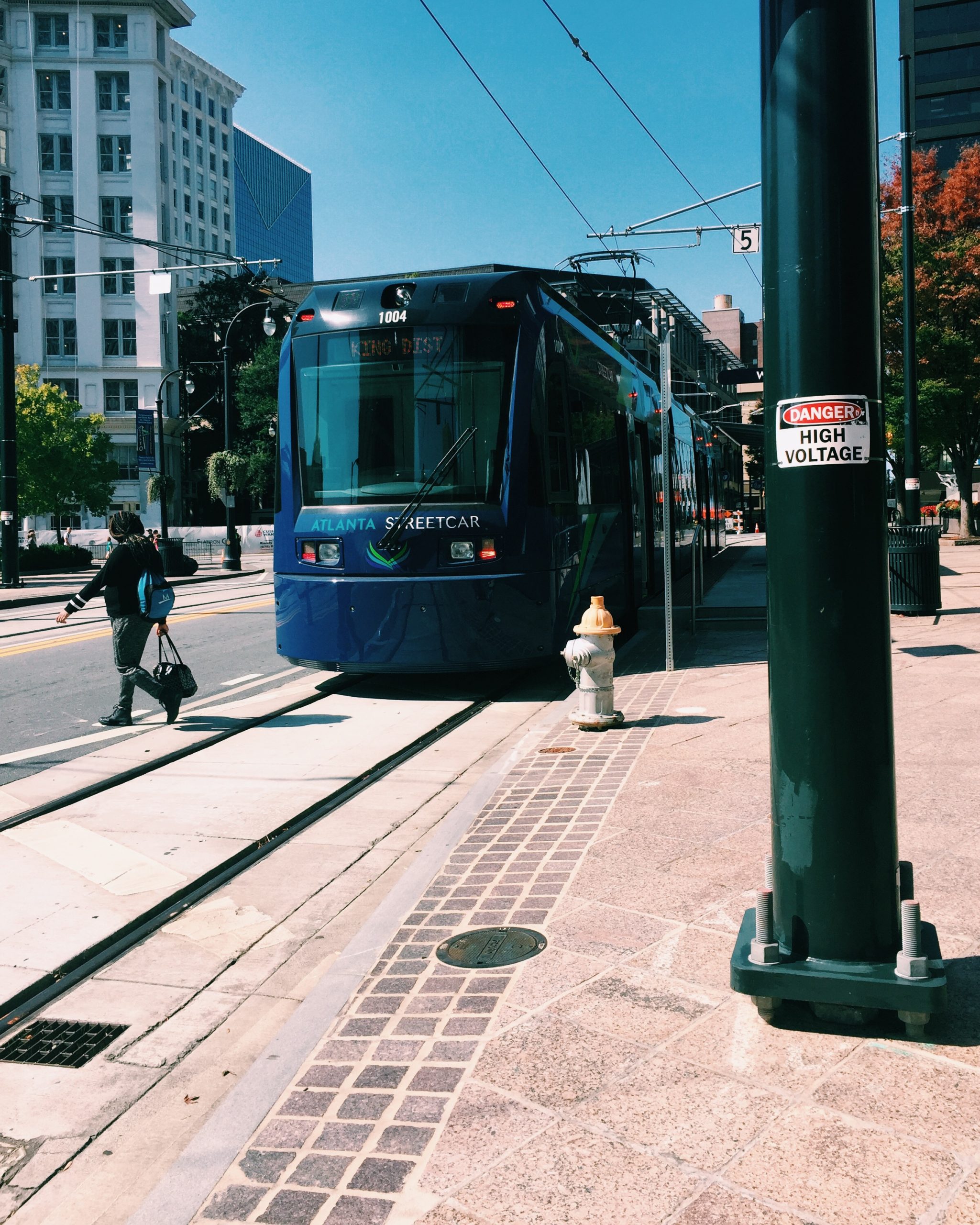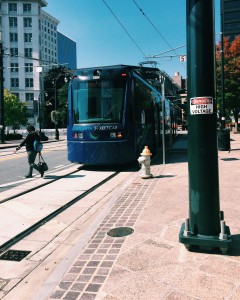

Whether you’re a frequent rider or not, enjoy these last few weeks while you can because starting in January the Atlanta Streetcar will no longer be free.
Construction of the 12-foot-tall trolley began in 2012 and made its debut on Downtown streets in December of 2014. Since the streetcar’s grand opening, it has attracted a group of diverse consumers that includes tourists, locals and Georgia State students.
The streetcar will begin charging a ridership fee and continuing its economic development plan in 2016, even though it has had vandalism and accidents since it began running.
The fate of the fare
When the streetcar first opened to the public, it was intended to be free only for the first three months but Atlanta Mayor Kasim Reed extended free ridership for the rest of 2015.
Even though project designers had an expectation of over 2,000 riders each weekday, the streetcar’s initial ridership was 18% lower than anticipated according to the AJC.
Reed decided to extend the free fare in hopes that the streetcar would become a habit to the community. A trip to Israel allowed Reed to discover new fare collection technology, according to SaportaReport.
The City of Atlanta’s Press Secretary Jenna Garland confirmed that the streetcar will no longer be free for consumers in the upcoming year.
“The streetcar will have fare service for 2016. We will have a few different ways to purchase the fare in January,” Garland said.
Two of those ways include the MARTA Breeze Card system and a new mobile app that will allow riders to pay their fare with the use of a smartphone.
Accidents and vandalism
Drivers, pedestrians and bikers who make up Atlanta’s busy downtown area can spot the 80-foot long electric trolley traveling on a path of thick rails beside bright yellow traffic lines.
However, this past year hasn’t always been a smooth ride for the $98 million streetcar since it’s no stranger to accidents and vandalism.
“I believe the current figure is 11,” said City of Atlanta’s Press Secretary Jenna Garland.
Most of these accidents resulted with the driver of another vehicle being at fault except for one instance in which the streetcar driver was arrested on unrelated traffic charges, according to WABE.
A safety video on the Atlanta Streetcar website warn drivers to obey traffic laws and to be cautious of an approaching streetcar. Since when it comes to an accident involving a regular vehicle, the odds are in favor of the 96,000-pound streetcar.
Vandalism proved to be another issue for the streetcar back in September. One perpetrator slipped into the Atlanta Streetcar’s fenced-in vehicle maintenance depot and tagged three streetcars this past September, according to the AJC.
Garland recounts the events that led to the streetcar being vulnerable to vandalism and what was done to prevent another incident.
“Our security contract at the time required two officers at the Vehicle Maintenance Facility each night,” Garland said.
However, according to Garland, one of the officers had a family emergency and was unable to make his shift. The supervisor failed to call in a second security guard, leaving only one officer on patrol during the night of the vandalism.
“As a result, the city has secured a new security contractor,” Garland said.
Economic development
The light-rail project was designed to improve downtown Atlanta’s east-west connectivity and to add value to the surrounding neighborhoods, according to the Atlanta Streetcar Corridor Development and Investment Guide.
“More than $1.5 billion in new development has sprung up within a five minute walk of the Streetcar line,” Garland said.
The Downtown Atlanta area near the streetcar route is continuing to expand with several real estate developments planned for the next year.
Student Experiences
Whether you’re noticing the several yellow writings on the ground that say “streetcar” or passing by the streetcar’s Woodruff Park stop on your way to Aderhold, the streetcar has made its presence known to the Georgia State community.
Adriana Parra, a Georgia State nursing major, said she doesn’t want to get hit by the streetcar.
“It only has the little bell [to signal its arrival] and you can’t hear it if you’re wearing headphones,” she said.
It takes about 60 feet to come to a complete stop, according to the Atlanta Streetcar website. Its ads urge pedestrians to be “Streetcar Smart” and to “Stop. Look. Listen.”
Kento Londot, a Georgia State sophomore, chooses to ride the streetcar, instead of driving to big Downtown events.
“Around here in Atlanta it’s a lot easier to take a streetcar instead of drive to big events like concerts,” Londot said.
Londot rode the streetcar to Centennial Olympic Park then walked to a concert at the Georgia Dome to avoid expensive parking fees.
“It came in handy and I felt pretty safe,” Londot said.
When asked if he would still ride the streetcar if he had to pay a fare, Landot said he would “rather walk.”

Adriana Parra, a Georgia State nursing major, said she doesn’t want to get hit by the streetcar.
“It only has the little bell [to signal its arrival] and you can’t hear it if you’re wearing headphones,” she said.
TAKE YOUR HEADPHONES OFF